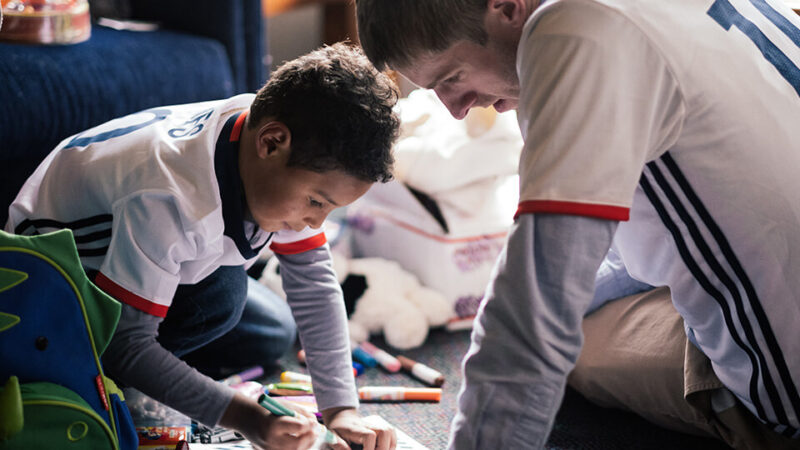Building and Maintaining Trust

When I was a high school teacher, students sometimes came into my room to talk between classes or during off periods. Moments to catch up on grading or just take a breath were hard to come by. It was always a challenge to choose to connect with a student outside the usual Spanish conjugation practice and general corralling of classroom behaviors.
One moment remains engrained in my memories. During a lunch period, a student who had attempted suicide earlier that year came into my room, sat down, sighed, and said “Miss, I just don’t want to be here. I mean, I want to be alive, but I just get so annoyed with other kids and all this homework, and I just don’t get why everything is so hard.” He shared more about the normal frustrating things of teenage life. In that moment, I realized that this adolescent boy trusted me enough to share pieces of his hard day. He needed someone to see him and hear him and for that day I was able to join other teachers, counselors, and his parents who were attempting to do the same.
Building Trust
Many of us, whether we are parents, teachers, or caregivers in any fashion, become safe bases for children through repeated interactions of play, feeding, snuggling, or simple conversations. In these spaces, we create a history of connection that communicates to children “you can trust me because I am a safe person that sees you.” This is the heart of connection.
Gary Landreth wisely said, “Birds fly, fish swim, and children play.” Play is the language children use to understand and process their world, and we can “speak” it with them. Especially in those early non-verbal years, joining in their play will give you insight into their internal world and create space for them to share their feelings and thoughts that they may not even realize they have. Join your child as he or she aggressively squishes Play-Doh or comforts a sad unicorn stuffed animal. Amazingly, within play, you can easily connect with eye contact, healthy touch, and mirroring your child’s actions. All of this tells a child “I see you and want to be with you.”
With older children, connection and building trust may look like a late-night milkshake run, a spontaneous conversation while they do homework, or practicing a dance video alongside them. Choosing to invest in their interests (even if you are not actually that interested) is a simple way to communicate “I see you and what you like.” At times with my students, listening to a five-minute incredibly detailed description of a video game led to thoughts about their families, needs, and hopes for the future. Because I made space to hear what was important to them, I was able to connect on a deeper level.
An often challenging place we accompany our children is medical appointments. Pokes and prods as well as memories of previous visits can make doctor’s offices a place of fear and anxiety for people of all ages! As a caregiver, you can build and maintain trust by preparing well beforehand and supporting them in the hard moments of being examined or getting a vaccine. Check out our Families Are Forever Course: FAF 113: Supporting Children During Medical Encounters for more tips on managing medical experiences with your child.
Maintaining Trust
Trust is maintained when a person responds well in difficult moments. This can look like staying calm as a toddler has a meltdown in a grocery store, quietly distracting a child during an immunization or a blood draw, or accepting the wild feelings of a teen as they vent about their annoying Spanish teacher. These challenging moments are prime soil for maintaining trust. When we accept their reactions and help them return to regulation, we communicate “you are safe and secure with me, no matter what you are feeling or doing.” This can be one of the hardest and most powerful things we can do when caring for children.
It’s fair to say that we, as adults, often have BIG FEELINGS alongside whatever our children are experiencing, but we have to make the choice to respond in a way that helps regulate our children rather than escalate the situation. Children, whether they’re two years old or a teen and lack the ever-so-important frontal lobe, are still working on that pause between emotion and action. Validating emotions in those volatile moments allows a child to feel their feelings and learn how to manage them without shame. Phrases like: “It looks like you are feeling something. I am here if you need me.” Or, “You seem ______, that’s hard” can be helpful. Validate those emotions and then help the child move on to the next best step: regulation. This may look like offering a hug, sitting quietly next to your child, or offering choices for a snack. While a child of any age may reject everything you offer in the moment, you are still communicating “I am here for you and want to help you.” Your presence and offerings help show a child that you are willing to be with them even in their worst moments.

Dottie Barnhart
Families Are Forever Coordinator